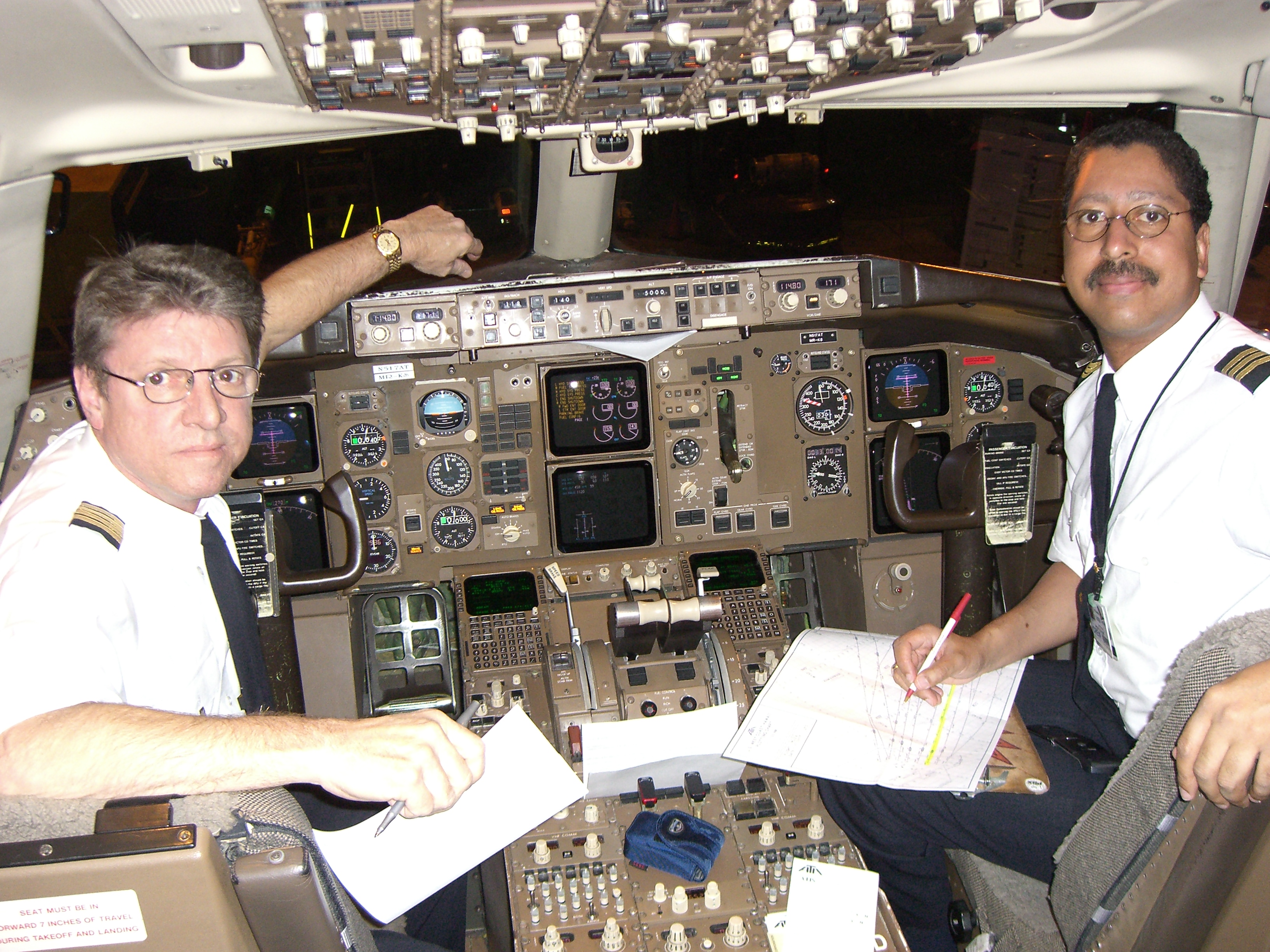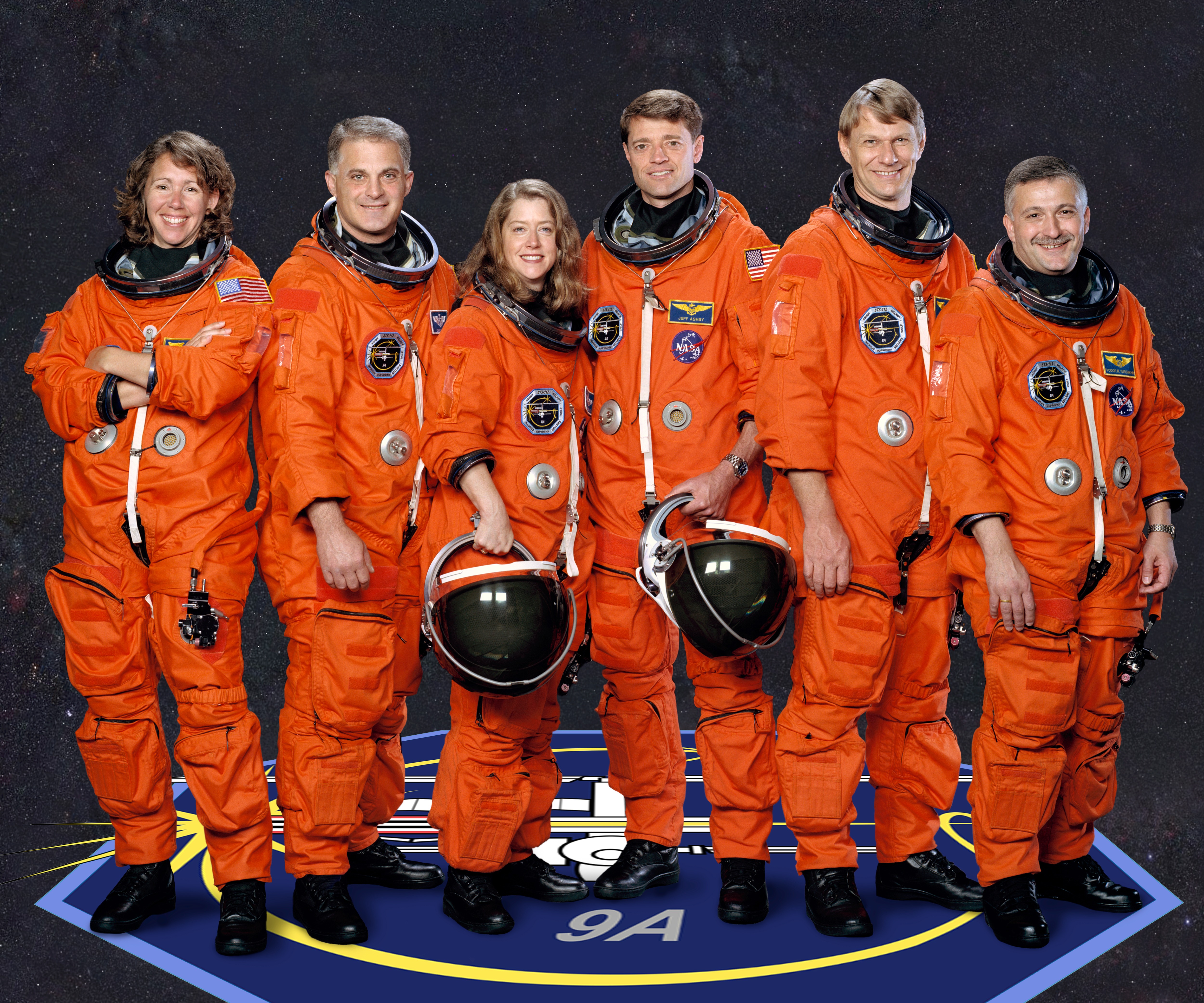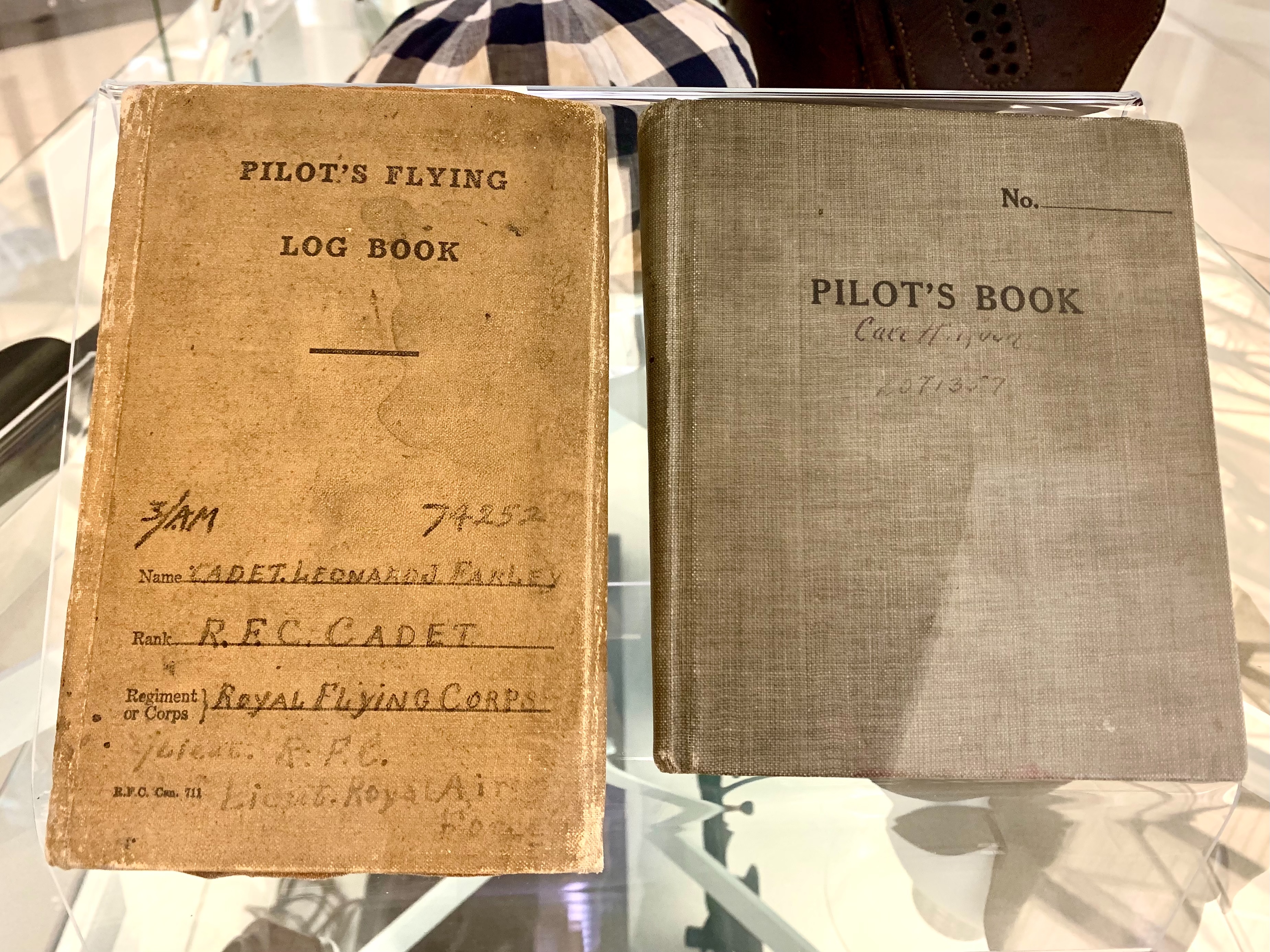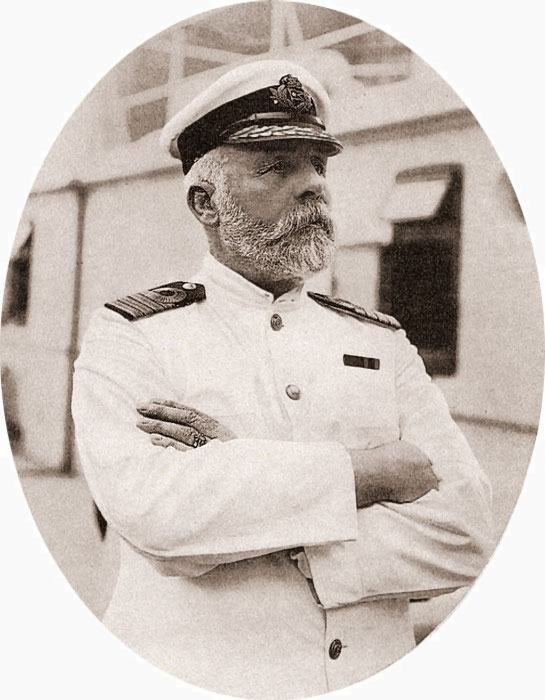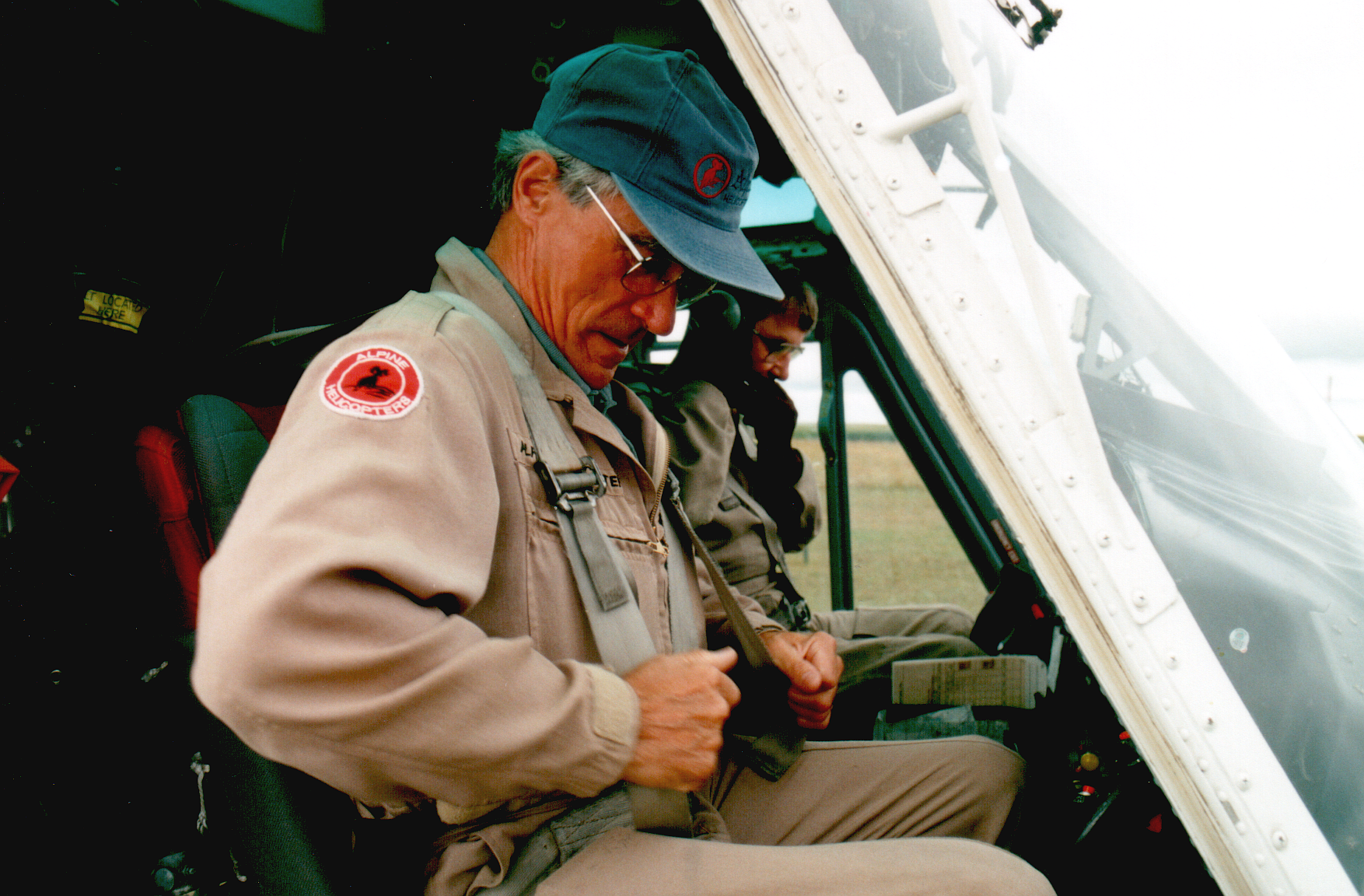|
Pilot In Command
The pilot in command (PIC) of an aircraft is the person aboard an aircraft who is ultimately responsible for its operation and safety during flight. This would be the captain in a typical two- or three- pilot aircrew, or "pilot" if there is only one certificated and qualified pilot at the controls of an aircraft. The PIC must be legally certificated (or otherwise authorized) to operate the aircraft for the specific flight and flight conditions, but need not be actually manipulating the controls at any given moment. The PIC is the person legally in charge of the aircraft and its flight safety and operation, and would normally be the primary person liable for an infraction of any flight rule. The strict legal definition of PIC may vary slightly from country to country. The International Civil Aviation Organization (ICAO) definition is: "The pilot responsible for the operation and safety of the aircraft during flight time." In Annex 2, "Rules of the Air", under par. "2.3.1 Responsi ... [...More Info...] [...Related Items...] OR: [Wikipedia] [Google] [Baidu] |
Crew Amt4586 Preflight
A crew is a body or a group of people who work at a common activity, generally in a structured or hierarchical organization. A location in which a crew works is called a crewyard or a workyard. The word has nautical resonances: the tasks involved in operating a ship, particularly a sailing ship, providing numerous specialities within a ship's crew, often organised with a chain of command. Traditional nautical usage strongly distinguishes officers from crew, though the two groups combined form the ship's company. Members of a crew are often referred to by the titles ''crewmate'', '' crewman'' or ''crew-member.'' ''Crew'' also refers to the sport of rowing, where teams row competitively in racing shells. Types * For a specific sporting usage, see rowing crew. * For filmmaking Filmmaking or film production is the process by which a Film, motion picture is produced. Filmmaking involves a number of complex and discrete stages, beginning with an initial story, idea, or commis ... [...More Info...] [...Related Items...] OR: [Wikipedia] [Google] [Baidu] |
Pilot Logbook
A pilot logbook is a record of a Aircraft pilot, pilot's flying hours. It contains every flight a pilot has flown, including flight time, number of landings, and types of instrument approaches made. Pilots also log flight simulator, simulator time, as it counts towards training. In most countries, pilots are required to maintain a logbook, per their government's aviation regulations. The primary purpose is to show that certain requirements have been met for a Pilot licensing and certification, certificate or rating, and for currency purposes. Time logged is Flight time, block time, which includes time spent taxiing, not just time in the air. Flight logging requirements by country Australia In Australia, pilot logbooks must be retained for seven years after the last entry. European Union The European Aviation Safety Agency (EASA) provides a sample logbook format in which all flights should be logged. Information to be logged includes location and time of departure and arrival ... [...More Info...] [...Related Items...] OR: [Wikipedia] [Google] [Baidu] |
Pilot Flying
In commercial aviation with a two-person flight crew, the pilot flying (PF) is the pilot operating the flight controls of the aircraft. The other pilot is referred to as the pilot monitoring (PM) or pilot not flying (PNF). Before a flight departs, the pilot in command The pilot in command (PIC) of an aircraft is the person aboard an aircraft who is ultimately responsible for its operation and safety during flight. This would be the captain in a typical two- or three- pilot aircrew, or "pilot" if there is only ... must decide who the pilot flying and pilot monitoring will be for the remainder of the flight, or for any specific phase of flight (e.g., takeoff, approach, or landing). Typically, the flight crew swap roles on the return leg. References {{aviation-stub Aircraft operations ... [...More Info...] [...Related Items...] OR: [Wikipedia] [Google] [Baidu] |
Sea Captain
A sea captain, ship's captain, captain, master, or shipmaster, is a high-grade licensed mariner who holds ultimate command and responsibility of a merchant vessel. The captain is responsible for the safe and efficient operation of the ship, including its seaworthiness, safety and security, cargo operations, navigation, crew management, and legal compliance, and for the persons and cargo on board. Duties and functions The captain ensures that the ship complies with local and international laws and complies also with company and flag state policies. The captain is ultimately responsible, under the law, for aspects of operation such as the safe navigation of the ship, its cleanliness and seaworthiness, safe handling of all cargo, management of all personnel, inventory of ship's cash and stores, and maintaining the ship's certificates and documentation. One of a shipmaster's particularly important duties is to ensure compliance with the vessel's security plan, as required by the ... [...More Info...] [...Related Items...] OR: [Wikipedia] [Google] [Baidu] |
Aircrew
Aircrew are personnel who operate an aircraft while in flight. The composition of a flight's crew depends on the type of aircraft, plus the flight's duration and purpose. Commercial aviation Flight deck positions In commercial aviation, the crew responsible for operating and controlling the aircraft are called ''flight crew''. Some flight crew position names are derived from nautical terms and indicate a rank or command structure similar to that on ocean-going vessels, allowing for quick executive decision making during normal operations or emergency situations. Historical flightdeck positions include: * Captain, the pilot Pilot-in-Command and highest-ranking member or members of a flight crew. * First officer (FO, also called a co-pilot), another pilot who is normally seated to the right of the captain. (On helicopters, an FO is normally seated to the left of the captain, who occupies the right-hand seat.)Smith, PatrickPatrick Smith's Ask The Pilot: When a Pilot ... [...More Info...] [...Related Items...] OR: [Wikipedia] [Google] [Baidu] |
Pilot Flying
In commercial aviation with a two-person flight crew, the pilot flying (PF) is the pilot operating the flight controls of the aircraft. The other pilot is referred to as the pilot monitoring (PM) or pilot not flying (PNF). Before a flight departs, the pilot in command The pilot in command (PIC) of an aircraft is the person aboard an aircraft who is ultimately responsible for its operation and safety during flight. This would be the captain in a typical two- or three- pilot aircrew, or "pilot" if there is only ... must decide who the pilot flying and pilot monitoring will be for the remainder of the flight, or for any specific phase of flight (e.g., takeoff, approach, or landing). Typically, the flight crew swap roles on the return leg. References {{aviation-stub Aircraft operations ... [...More Info...] [...Related Items...] OR: [Wikipedia] [Google] [Baidu] |
Co-pilot
In aviation, the first officer (FO), also called co-pilot, is a pilot in addition to the captain, who is the legal commander. In the event of incapacitation of the captain, the first officer will assume command of the aircraft. Requirement Historically, large aircraft had several personnel on the flight deck, such as a navigator, a flight engineer, and a dedicated radio operator. Improvements in automation and reliability have reduced this to two. Many aircraft require a minimum of two flight crew. The minimum crew requirement will be stated in the aircraft manuals by the manufacturer. In the European Union, all turbo-propeller aeroplanes with a maximum approved passenger seating configuration of more than nine and all turbo-jet aeroplanes require two pilots.EU OPS (965) Subpart N, Ops 1.940 Composition of flight crew Role Control of the aircraft is normally shared equally between the first officer and the captain, with one pilot normally designated the " pilot flying" an ... [...More Info...] [...Related Items...] OR: [Wikipedia] [Google] [Baidu] |
Airline Transport Pilot Licence
The airline transport pilot license (ATPL), or in the United States of America, an airline transport pilot (ATP) certificate, is the highest level of aircraft pilot certificate. In the United States, those certified as airline transport pilots (unconditional) are authorized to act as pilot in command on scheduled air carriers' aircraft under CFR 14 Part 121. In EASA states and the United Kingdom, pilots must hold an ATPL before they can be pilot in command of a multi-pilot aircraft flown for commercial air transport operations. Context and privileges Any pilot operating an aircraft for money must start by obtaining a commercial pilot license (CPL). This permits the pilot to carry out aerial work, such as crop spraying or banner towing. However, in commercial air transport (CAT) operations, a CPL holder may only act as pilot in command of single-pilot aircraft or as co-pilot of multi-pilot aircraft. Commercial air transport is defined as "the transport of passengers, car ... [...More Info...] [...Related Items...] OR: [Wikipedia] [Google] [Baidu] |
Multi-crew Pilot Licence
A multi-crew pilot licence (MPL) is a pilot licence that permits an aircraft pilot to act as co-pilot of a multi-crew aircraft. History The MPL is specified by the International Civil Aviation Organization (ICAO). It was created in 2006 to provide an alternative means for ab-initio students to become commercial air transport (airline) pilots. Requirements were first included in the 10th edition of Annex 1 to the Convention on International Civil Aviation (Personnel Licensing), published in November 2006. The MPL is based on competency-based approach to training professional pilots. Previous training syllabi were task-based and hours-based. Calls in the 1990s for review of pilot training led to ICAO convening a Flight Crew Licensing and Training Panel (FCLTP) in 2001. This led to the MPL concept, which aims to take advantage of modern flight simulators and instructional systems design (ISD), and to provide training more appropriate to the highly automated environment of the mode ... [...More Info...] [...Related Items...] OR: [Wikipedia] [Google] [Baidu] |
Flight Instructor
A flight instructor is a person who teaches others to operate aircraft. Specific privileges granted to holders of a flight instructor qualification vary from country to country, but very generally, a flight instructor serves to enhance or evaluate the knowledge and skill level of an aviator in pursuit of a higher pilot's license, certificate or rating. United States Privileges A person who holds a flight instructor certificate (called a "certificated flight instructor" (CFI) is authorized to give training and endorsements required for and relating to: *a student, private, commercial or other pilot certificate; *the three hours of training with reference only to instruments in preparation for a private pilot certificate. Note that this does not need to be a CFII. *an instrument rating, only if the CFI has an instrument instructor rating (CFII); This cannot be given by a "safety pilot". A safety pilot can only be used to help maintain instrument proficiency with an instrument-rat ... [...More Info...] [...Related Items...] OR: [Wikipedia] [Google] [Baidu] |
EASA
The European Union Aviation Safety Agency (EASA) is an agency of the European Commission with responsibility for civil aviation safety in the European Union. It carries out certification, regulation and standardisation and also performs investigation and monitoring. It collects and analyses safety data, drafts and advises on safety legislation and co-ordinates with similar organisations in other parts of the world. The idea of a European-level aviation safety authority goes back to 1996, but the agency was legally established only in 2002; it began its work in 2003. History Based in Cologne, Germany, the agency was created on 15 July 2002 as the "European Aviation Safety Agency", and reached full functionality in 2008, taking over functions of the Joint Aviation Authorities. It was renamed the "European Union Aviation Safety Agency" in 2018. European Free Trade Association countries participate in the agency. The United Kingdom was a member until the end of the Brexit trans ... [...More Info...] [...Related Items...] OR: [Wikipedia] [Google] [Baidu] |
Aircraft
An aircraft ( aircraft) is a vehicle that is able to flight, fly by gaining support from the Atmosphere of Earth, air. It counters the force of gravity by using either Buoyancy, static lift or the Lift (force), dynamic lift of an airfoil, or, in a few cases, direct Powered lift, downward thrust from its engines. Common examples of aircraft include airplanes, rotorcraft (including helicopters), airships (including blimps), Glider (aircraft), gliders, Powered paragliding, paramotors, and hot air balloons. Part 1 (Definitions and Abbreviations) of Subchapter A of Chapter I of Title 14 of the U. S. Code of Federal Regulations states that aircraft "means a device that is used or intended to be used for flight in the air." The human activity that surrounds aircraft is called ''aviation''. The science of aviation, including designing and building aircraft, is called ''aeronautics.'' Aircrew, Crewed aircraft are flown by an onboard Aircraft pilot, pilot, whereas unmanned aerial vehicles ... [...More Info...] [...Related Items...] OR: [Wikipedia] [Google] [Baidu] |
